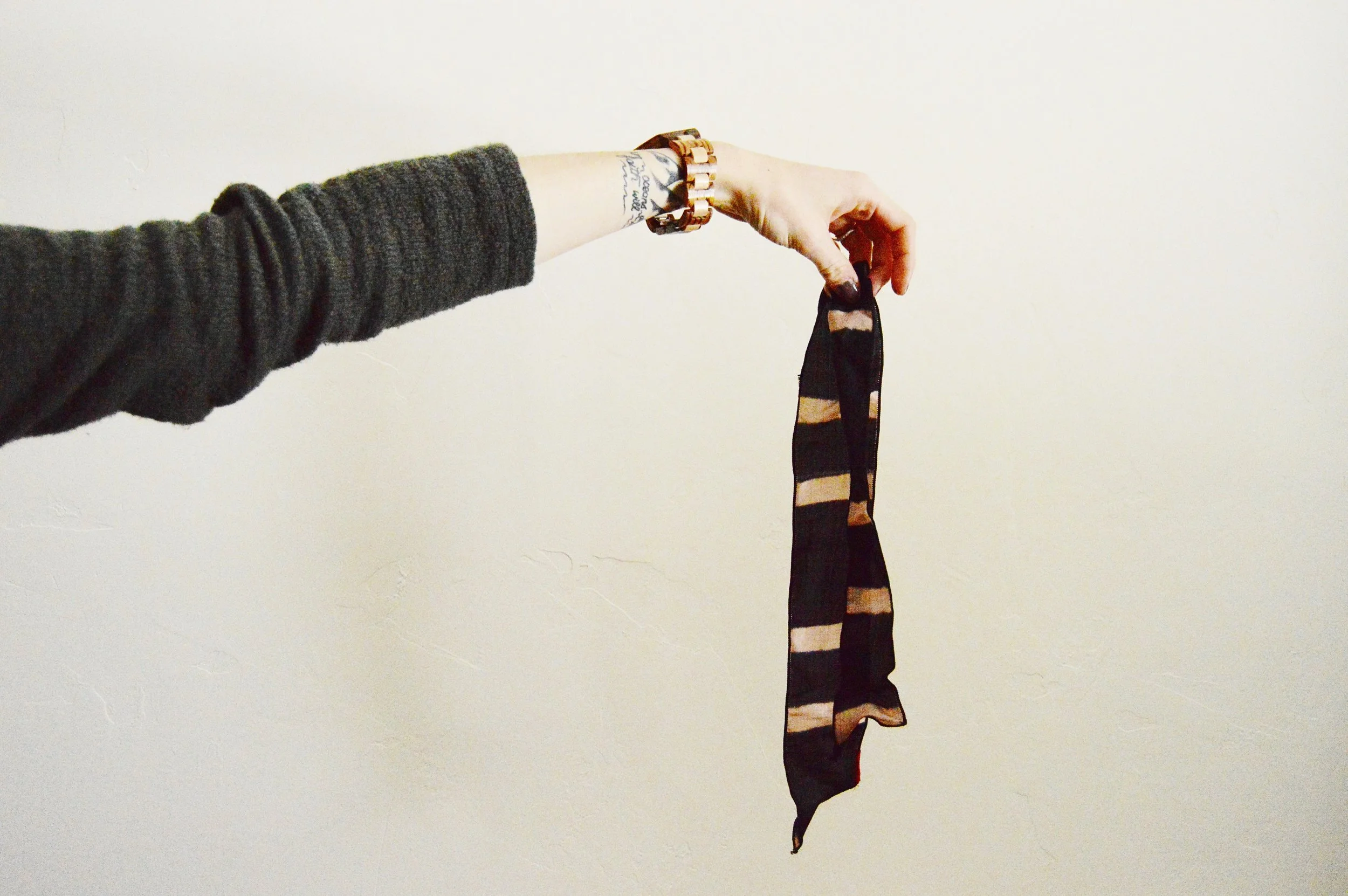Minimalism for Beginners || 5 Common Road Blocks and Why You Should Ignore Them
This piece is a guest post from Wendy Fjorden:
I don’t claim to be an expert at anything.
I’ve dabbled in lots of things: writing, painting, running, yoga, boxing, making my own paper, making incense burners out of wine bottles, hula hooping for exercise, but the one thing that seems to be sticking is minimizing my home.
Why is it sticking? It is not a hobby, but a change in lifestyle that I am committing to. I’m a mom to a teenage daughter, I’m a wife, I have a demanding job. I’m a daughter, a friend, a sister, a granddaughter, and a cousin. But, I’m not superhuman. I’m like you. I want to have time for myself and I want to have time for what I’m passionate about (or maybe even figuring out what I’m passionate about).
I think that when people hear minimalism they think:
“I don’t have time for that.”
“That’s a trend.”
“That’s for people that don’t have jobs.”
“I don’t even know where to begin.”
“Minimalism is something only rich people do.”
Here is how I would reply to those comments:
You DO have time for that.
My first project was my closet. Just take everything out and start sorting.
Start saying “no” so you can say yes. Like anything else you become interested in, you have to make time. Here’s what I did, that may or may not work for you. I started by blocking out some Saturdays. I asked my husband if he could take my daughter to symphony rehearsals. I then had a few hours free on a Saturday morning to just focus on minimizing. For a few Saturday afternoons I said “no” to everything.
But the idea of minimalism is to free up more time for the things that you want to do, right? Right. Do I want to be minimizing and decluttering every Saturday? No. But in the beginning, you do some hard work so that later you can reap the rewards of having less to clean and spaces that make you feel at peace.
Make time. It could be an hour on a Sunday. It could be two hours on the only Saturday you have free in the month. Say no to an event or obligation so you can say yes to more quality time later.
That’s a trend.
It’s true. It is. There are books like The Life Changing Magic of Tidying Up by Marie Kondo , articles, podcasts, websites, and bloggers that would all confirm that this is, indeed, a trend. Often, there is a reason for trends. The consumerism world and industrial lifestyle our society has built may not be who you are at your core. If you really are trying to build a life well-lived with less stuff cluttering your mind and space, you should stop and ask yourself the question of WHY you are wanting to declutter, WHY you want to minimize, WHY you want to slow down, WHY, WHY, WHY.
Before you do anything else, answer your questions. This will keep both the activity of minimizing and the reason behind it at the forefront of your mind. That way if doing something that is “trendy” has a negative connotation in your own mind, you’ll know your own reasons for doing it.
Why am I minimizing? I was stressed, worn out, caught in an endless cycle of scheduling activities. I yearned for spontaneity and adventure. I wanted more quality time in my life. I wanted less time looking for something to wear, putting on makeup, cleaning my possessions, sorting my bills, and adhering to societal standards for what was expected of me. I have not “arrived”, people. Nowhere close. But, I feel good about having started the journey.
That’s for people who don’t have jobs.
I have a full time, away from the home, often working overtime kind of job and I have been able to begin minimizing and downsizing. Simplifying your life, decluttering, minimizing…it’s not just for certain types of people. It’s not just for stay-at-home-moms, hipsters, millennials, or people that are moving into a tiny home.
“I was stressed, worn out, caught in an endless cycle of scheduling activities. I yearned for spontaneity and adventure. I wanted more quality time in my life. I wanted less time looking for something to wear, putting on makeup, cleaning my possessions, sorting my bills, and adhering to societal standards for what was expected of me.”
Get rid of the boxes, both the kind that you put stuff in and the kind that you put people in. It’s damaging to one’s psyche in both respects. I work at a desk, both at home and at work. However, my desk at home was the first place I started when I began my journey. I wanted a place for peace and creativity, not a place to store papers, stack bills, have a junk drawer, and put unwanted items like old batteries I would someday recycle, old keys to doors that weren’t even around anymore, and a stack of rubber-banded business cards of people I would likely never speak to again.
My desk is now a place for me to write, draw, and think. Gone are the boxes to sort the bills and the mail. Gone is the clutter. There is a coaster for my tea or coffee, a jar that helps me remember the soothing sounds of the beach, a plant (albeit a fake one because I kill plants pretty easily, but it’s green, at least and I’m working on keeping my real ones alive), a lamp and art supplies (just the ones I use a lot). Whether the space you want to create in your home is a creative one, a peaceful one, a work space, a reading space, a decorative space…it doesn’t matter. What does matter is that it is aesthetically and physically pleasing to you as a respite for when you are done with your job.
I don’t even know where to begin.
Begin with what you want. I wanted a creative space, so I began with the desk and wanted that desk to bring me joy, not a heavy sigh and a reminder of all that I needed to do instead of write or create.
Begin with what will bring you joy.
Would it bring you joy to declutter all of your technology so you don’t look at your phone or computer and think about all the e-mails that need to be answered, all the phone calls to return, all the Facebook messages to reply to, all the photographs to upload, all the social media platforms to have a presence on? Or would it bring you joy to clean out your closet so that you don’t feel all flustered trying to find something to wear? Or, would it bring you joy to tackle organizing the garage so you can actually use it to park your vehicle or maybe even create a workout space? Or, would it bring you joy to be able to easily find only the essentials you need in your kitchen?
Wherever it is, begin with YOU. You need your own space. Where will it be? Begin de-cluttering and minimizing in that space. Make that space yours, keeping only what is essential or perhaps entirely re-creating that space, and move on to the next space you would like to minimize. Bit by bit, space by space, you will be able to tackle minimizing your home.
Minimalism is something only rich people do.
It’s true that if you are poor that you live minimally by default. If you do have any sort of expendable income, you still have to make decisions about where to spend that income. If you are spending more money to be a so-called “minimalist” then the message went awry somewhere along the way.
When I began to de-clutter, did I buy some things to make that process easier for me? Yes, I did. I bought a couple of storage containers to put items in until I could have a garage sale. I bought some under-the-bed storage for each season’s capsule wardrobe items and some vintage clothing I can’t part with right now. But, I have that luxury. Others do not and in no way, shape, or form does de-cluttering or beginning to minimize require any sort of purchasing of anything. You can, however, recycle and reuse, and re-create items you already have to organize the items you want to keep.
For instance, I used boxes received in the mail to cut down and make dividers for the dreaded junk drawer. I am also trying to spend my money in a way that allows for more conscious decisions about what I do bring into my home. Quality not quantity. Perhaps you want to begin buying ethically-made items, perhaps you got rid of clothing that didn’t bring you joy, but now would like to find clothing that does. The decision is yours. There is freedom in minimalism. Either way, most people aren’t “rich” and have to budget for any items they purchase. I know I do. But, I find myself buying less. I’m becoming more “rich” with time and find myself saving more for the things I really do want to bring into my home.
So, if you would like to begin employing the idea of minimalism in your home, I have these suggestions:
You can make time. You can.
If it’s a bandwagon, it’s a good one to be on.
Get rid of the boxes- physical and mental. And keep your day job.
Think about the space you want to work in (if you work at home) or the space you want to come home to (when your day job is over).
- You don’t need money to minimize.
About the author:
Wendy Fjorden loves reading, writing, and all things literary. By day, she is an Instructional Support Library Media Specialist providing help to almost 100 library staff. By night she tries to live simply as a beginning minimalist that enjoys hot baths, drinking coffee/wine/tea (in that order), being outside, running, boxing, and spending time with her family unit (a thirteen year old daughter, a husband, and a cat). Her passion is writing, usually young adult fantasy novels. Those novels might someday be found on the library shelves she loves to peruse so much. That's the dream, anyway. Her goal in life is to be a nice human with a purpose, possibly making others think about theirs.









